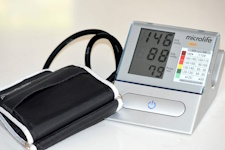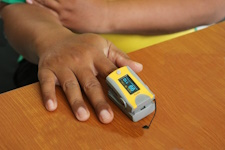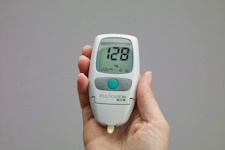
- - - - - -2- - - - - -3
Medical devices
The Northeast Telehealth Resource Center is a vendor agnostic entity and does not recommend any specific vendors or manufacturers of telehealth equipment. Below are some examples of equipment types and are not meant to come as recommendations. Click on the images below to see brief descriptions of each.

Consumers can select from a variety of blood pressure cuffs on the market that can be used to monitor blood pressure from home. Having these readings ready when preparing for a telehealth visit can be helpful to your provider.

Cameras, such as the one shown here, can be easily connected to a laptop or desktop to enhance the quality of the video call. These can often be found bundled with speaker and microphone to enhance the audio quality as well.

Digital stethoscopes are able to transmit data in real time to a far-end provider. This data can be important for patients participating in a remote patient monitoring program.

Pulse oximeters measure the level of oxygen in the blood. Similar to blood pressure cuffs, these are readily available for patients to purchase and having these readings can be helpful during a telehealth visit.

Body weight scales are common household items that can be used to support a virtual telehealth exam. Patients may be asked to self report or capture a picture of their weigh-in.

Otoscopes are devices that can provide a look inside the ear for wax build-up or signs of infection. There are many devices on the market now that a patient can use at home to capture these same images and share with their provider.

Glucose monitors measure the amount of sugar (glucose) in the blood. There are many methods and devices that patients with or at risk for diabetes can access to measure from home and share during a telehealth visit.